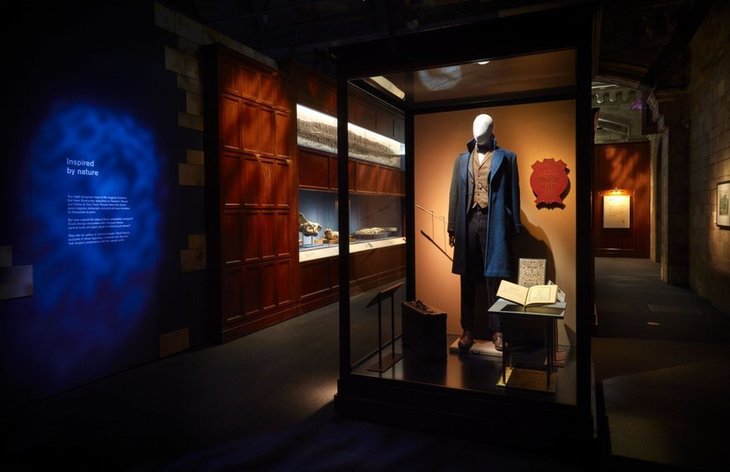Find Fantastic Beasts At The Natural History Museum In This Magical Exhibition
Looks like this article is a bit old. Be aware that information may have changed since it was published.

Can you tell a Demiguise from a Vaquita? How about an Okapi from an Erumpet?
The Natural History Museum has teamed up with the magical realm of Harry Potter and Newt Scamander to bring us a multitude of fantastic beasts — from both the mythical and natural worlds.

Kids will lap up Fantastic Beasts: The Wonder of Nature: there are props from the Potter movies and cabinet doors that swing ajar, as if beasts lurk inside.
Behind the enchanting razzmatazz, there's some serious research. We explore where centuries-old myths of dragons may have originated, including the likely culprit of dinosaurs. One recently discovered fossil looks so much like a dragon, palaeontologists named it Dracorex Hogwartsia in honour of the JK Rowling invention. Next to a prop skull from the films, it's not immediately obvious which is real.

Truth and fiction continue to merge, with the skeleton of a giant oarfish that pushes the realms of reality. How can a fish that long exist? Yet it does. More proof that truth can be stranger than fiction is the bone-house wasp, which stuffs dead ants into its nest, to throw others off its scent. Kids might find some of this stuff scarier than a dementor. I certainly did.

Fans of the movies can get (sanitised) hands-on by tempting a Niffler out with some jewellery; seeing how close they can get to a group of Bowtruckles before being scared away from their tree; and by pulling open doors to reveal the song of humpback whales. This sound, we learn, was perhaps the inspiration for another fantastical creature, the mermaid.

Something both Newt Scamander and the Natural History Museum have in common is their desire to preserve endangered species, and Fantastic Beasts: The Wonder of Nature ends with a look at the conservation efforts of scientists, including protecting the adorable Kakapo — a flightless parrot from New Zealand.
A taxidermied Caspian tiger, meanwhile, is sad proof of what happens if we don't act; this subspecies was hunted to extinction in the 1970s.

As a final task, anyone can design their own poster for saving a species, real or fictional. Along with tips on how to live more sustainably, important messages are layered with lashings of fun throughout this show. It creates a lasting impression even an Obliviate spell can't erase.
Fantastic Beasts: The Wonder of Nature is on at Natural History Museum until January 2022. Tickets are £22 for adults and from £38.50 for a family.
Last Updated 04 October 2021




